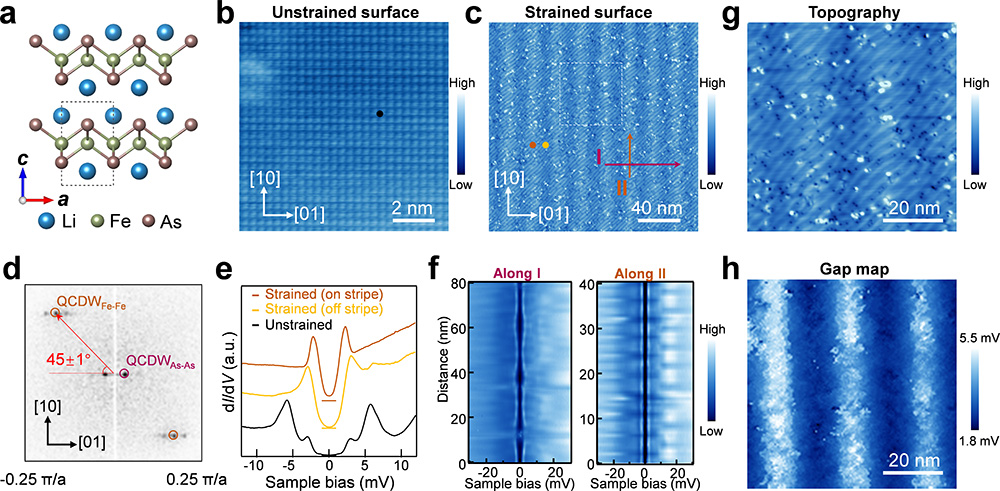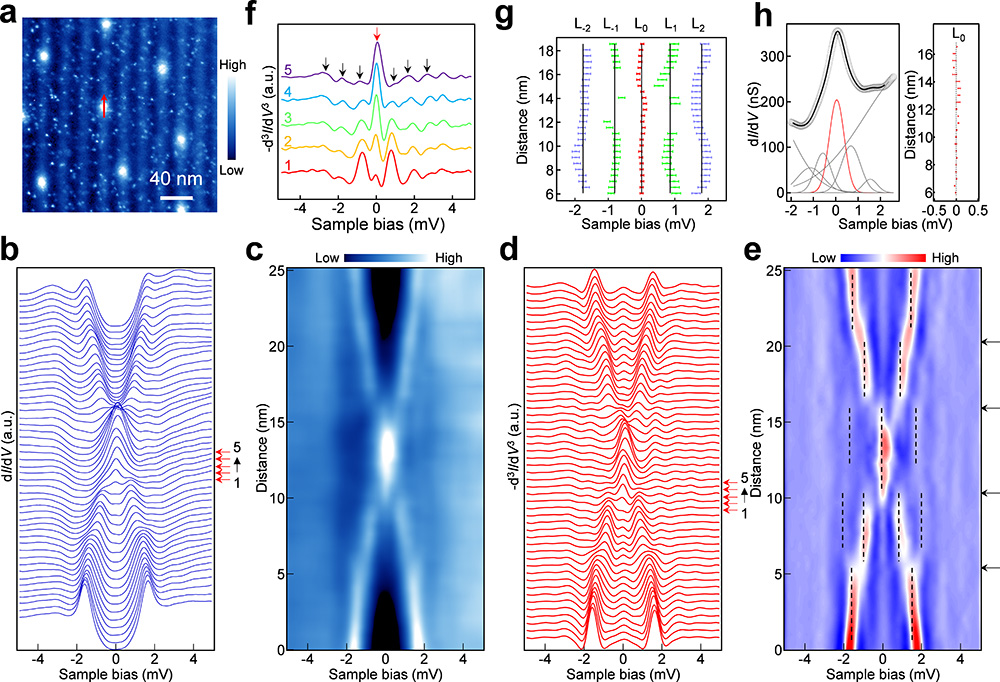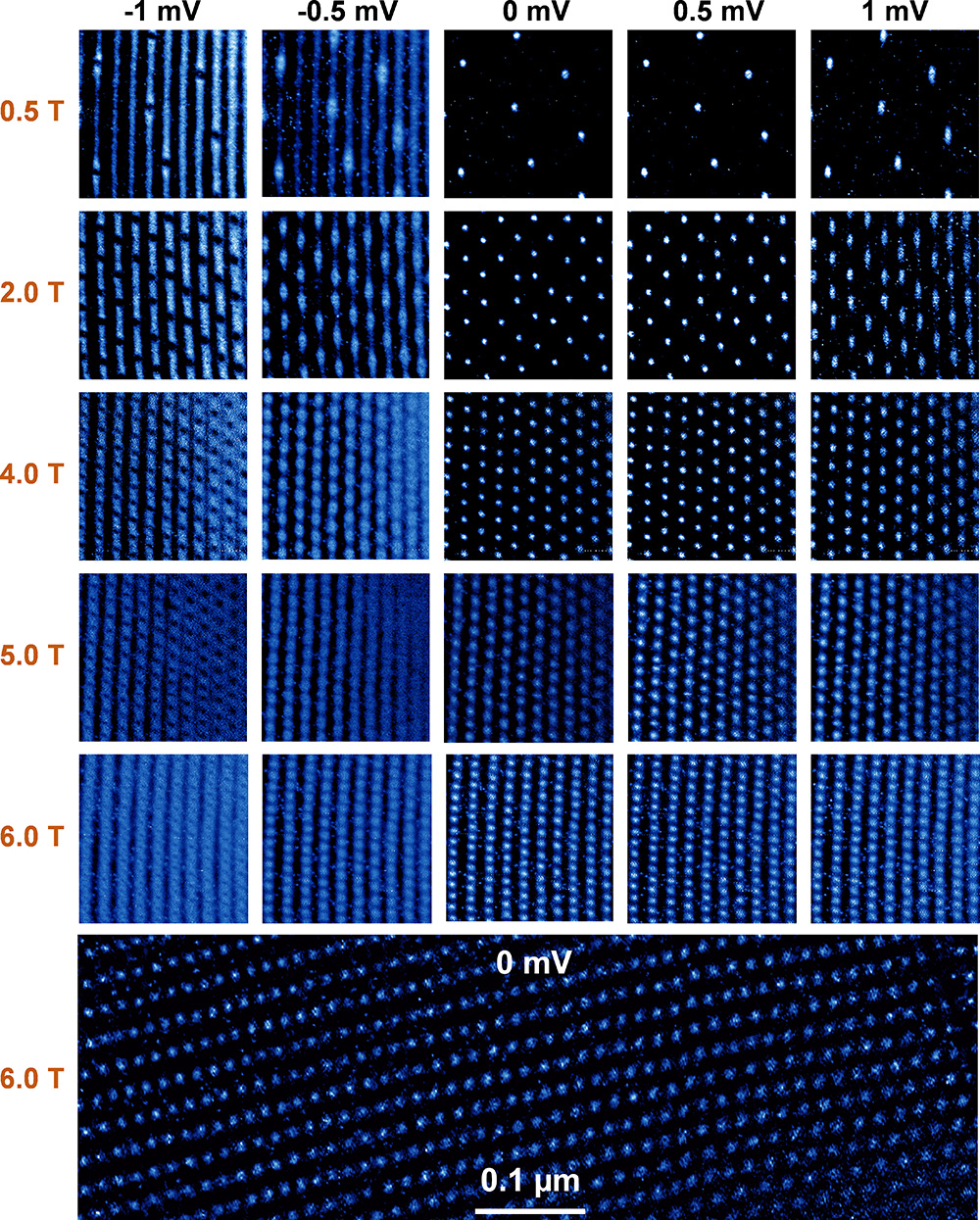In a study published in Nature on June 8th, a joint research team led by Prof. GAO Hongjun from the Institute of Physics of the Chinese Academy of Sciences (CAS) has reported their observation of a large scale, ordered and tunable Majorana-zero-mode (MZMs) Lattice in iron-based superconductor LiFeAs, providing a new pathway towards future topological quantum computation.
MZMs are zero energy bound stated confined in crystals' topological defects, such as line defects and magnetic field induced vortices. They are characterized by Scanning Tunnelling Microscopy/Spectroscopy (STM/S) as zero-bias conductance peaks. They obey non-Abelian statistics and are considered as building blocks for future topological quantum computation.
MZMs have been observed in several topologically non-trivial iron-based superconductors, such as Fe(Te0.55Se0.45), (Li0.84Fe0.16)OHFeSe and CaKFe4As4. However, these materials suffer from issues with alloying-induced disorder, uncontrollable and disordered vortex lattices and low yield of topological vortices, hindering their further study and application.
In this study, the researchers have observed the formation of ordered and tunable MZM lattice in naturally-strained superconductor LiFeAs. Using STM/S equipped with magnetic fields, the researchers found that local strain naturally exists in LiFeAs. Biaxial charge density wave (CDW) stripes along the Fe-Fe and As-As directions are produced by the strain, with wavevectors of λ1~2.7 nm and λ2~24.3 nm. The CDW with wavevector λ2 shows strong modulation on the superconductivity of LiFeAs.
Under magnetic field perpendicular to the sample surface, the vortices emerge and are forced to align exclusively along the As-As CDW stripes, forming an ordered lattice. The reduced crystal symmetry leads to a drastic change in the topological band structures at the Fermi level, driving the vortices into topological ones hosting MZMs, forming an ordered MZM lattice. The MZM lattice density and geometry are tunable by an external magnetic field. The MZMs start to couple with each other under high magnetic fields.
This observation of large scale, ordered and tunable MZM lattice in LiFeAs enriches the MZM family in iron-based superconductor, providing a promising platform for manipulating and braiding MZMs in the future, according to the researchers.
These findings may shed lights on the study of topological quantum computation using iron-based superconductors.
This study was supported by the National Science Foundation of China, the Ministry of Science and Technology of China, and CAS.










